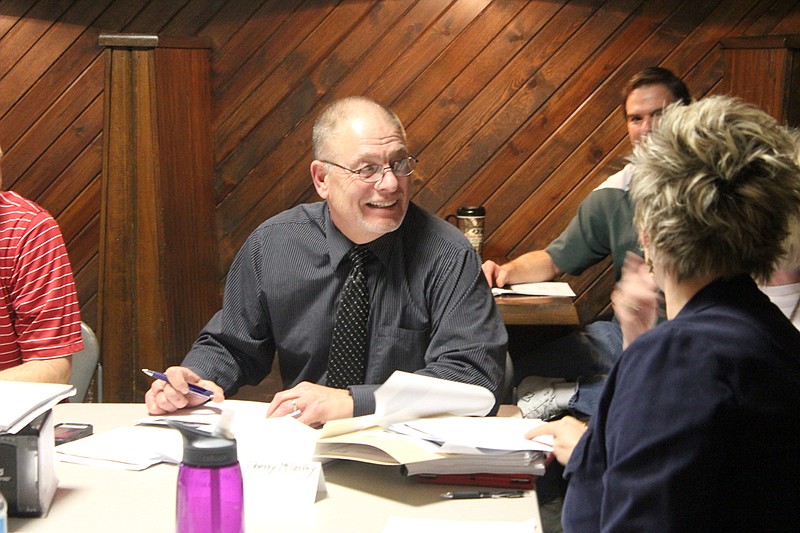"I feel like I'm playing a giant game of Dungeons & Dragons," said William Woods University Behavioral and Social Science Chair Shawn Hull as he jotted down statistics on a pad of paper.
The training exercise Hull was in wasn't unlike the popular tabletop role-playing game in which players take on personas to tackle scenarios created by a game master. White and about 30 other colleagues in the room spent Wednesday afternoon balancing fictional tasks, managing hypothetical resources and interacting with imaginary officials.
But the "game" they were playing had more serious, real-life implications than saving princesses or conquering castles. The exercise was part of a three-day emergency management training program to help better prepare the school for any number of emergency situations.
The program was facilitated by James Reseburg and Bob McKibben of Emergency Planning Solutions, a consulting firm specializing in emergency management for higher education facilities.
"We're here to assist and train people and develop a plan that they get to weigh in on," Reseburg said. "It's campus-specific, each campus needs to have their own because William Woods is different than, for example, Stanford University. That's why we develop a plan with that school in mind for all hazards, man-made or natural."
WWU President Jahnae Barnett said the school first became aware of the consultants when she sent a handful of staff members to an open FEMA-sponsored program they held at a nearby college. Based on her staff's review, Barnett contracted Emergency Planning Solutions to develop a plan that would save lives, save property and mitigate loss.
"We have texts, a phone line and have gone through a designated process, but we don't have anything as comprehensive as this," Barnett said. "It's a way to help the students. You always have to be aware, but now we'll be much more comfortable knowing what to do if an emergency happened."
WWU and Emergency Planning Solutions have also worked with local officials, including Fulton Mayor LeRoy Benton, the Fulton Police and Fire departments and the Callaway County Ambulance District, in coordinating their plan.
Akin to the role-playing game in Hull's comparison, Reseburg acted as the "game master," sequestering himself and a number of helpers in another room to create an elaborate scenario that was relayed to the trainees by phone to see how well William Woods' staff could handle a disaster and report appropriate information to the correct people or agencies. Under an increasingly darkening April sky, the campus was hosting several high school students for a visit, a flasher streaked the dining hall, PETA protesters released all of the school's horses from their stalls and the 12th Street bridge exit was blocked by an accident - all before a tornado hit and destroyed a dorm, killing 20 students and injuring 45.
Reseburg then instructed people to call those in the other room and act as medical personnel, emergency operators, concerned parents, state officials and a number of other people the school would expect to hear from in such a situation, all in rapid succession.
"That's how things happen - you'll find the first two hours are really chaotic when you're first going in," Reseburg said. "There's a lot going on, but after about two hours it calms down and gets easier to manage."
Aside from a few hiccups, Reseburg commended the school for its response time and management of rapidly-changing information.
"I was really impressed with the amount of information that got back to me. Normally that doesn't happen, I'm extremely impressed," Reseburg said. "When I give them information, they process it, make a decision and call back with what I wanted them to do."
After training sessions conclude today, Reseburg said he and McKibben would process the information and make a disaster plan that WWU could expect in the next six months.

